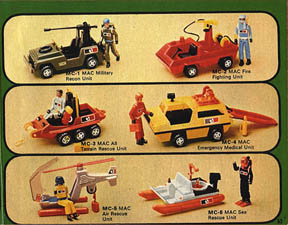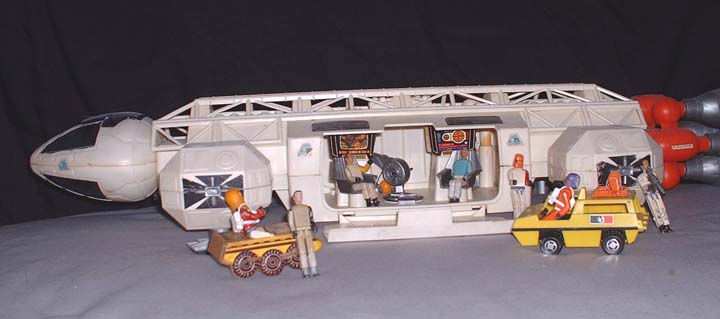 This was pretty standard stuff, except for the fact that these 3” figures were fully articulated. Prior to that time, any figure this size, like the traditional toy soldiers, were solid plastic with no moving parts. These little fellows had joints at the shoulders, elbows, hips, and knees. This was a new development. Despite my general disinterest in action figures at this point in my life, I did ask my parents to order these for me for Christmas. Frankly, gift receiving had become sadly routine by this time. I would simply pick out stuff from the catalogues and my parents would order the items for me. Never any surprises on Christmas morning.
This was pretty standard stuff, except for the fact that these 3” figures were fully articulated. Prior to that time, any figure this size, like the traditional toy soldiers, were solid plastic with no moving parts. These little fellows had joints at the shoulders, elbows, hips, and knees. This was a new development. Despite my general disinterest in action figures at this point in my life, I did ask my parents to order these for me for Christmas. Frankly, gift receiving had become sadly routine by this time. I would simply pick out stuff from the catalogues and my parents would order the items for me. Never any surprises on Christmas morning.
Anyway, these little figures were the highlight of that Christmas season. My friends a nd I were no longer playing with action figures as a group, but I must admit to playing around with these little MAC men in the privacy of my house. During this time, I also became a first class science fiction nerd, and I noted how the MAC emergency medical vehicle looked somewhat like the moon buggies on Space: 1999. Soon, I was painting my MAC men to look like Moonbase Alpha personnel. (For more on MAC men, click here.)
nd I were no longer playing with action figures as a group, but I must admit to playing around with these little MAC men in the privacy of my house. During this time, I also became a first class science fiction nerd, and I noted how the MAC emergency medical vehicle looked somewhat like the moon buggies on Space: 1999. Soon, I was painting my MAC men to look like Moonbase Alpha personnel. (For more on MAC men, click here.)
This was my only personal brush with really small action figures, but the movement was underway. By 1977, Mego had introduced The Micronauts, 3 ¾” fully articulated figures that looked like androids and robots with bodies of chrome and colorful, translucent plastic. As a more economically minded adolescent, I could see the practical nature of these smaller figures. Smaller figures meant smaller cost. Smaller cost meant smaller price per unit. Parents would be more inclined to buy their kids a pile of Micronauts rather than shell out big money for a G.I. Joe and some costume sets. Still, they just seemed too darn small to get all that excited about.
Of course, the explosion in the tiny action figure market occurred when




No comments:
Post a Comment